For most people, the wolf is not just a wild animal, but an archetypal image familiar from childhood. He became a character in fairy tales by chance. People have long been afraid and revered this beast. They scared naughty children with a wolf, called the man’s older brother, and composed fairy tales and legends about him.
In the languages of different peoples of the world, the word wolf is consonant. It is worth noting that it was born in the Old Slavic language and means "drag" or "drag". Apparently, the name came from the manner of moving production by dragging (dragging in front of you).
World Habitat and Distribution
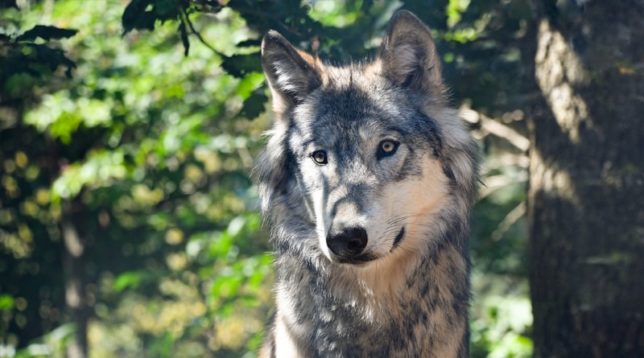
In past centuries, the wolf was the most common animal on earth. To date, the habitat has declined significantly. The reason for this is the widespread destruction of animals by humans. Today, most of the species lives on the territory of the following countries: Russia, Belarus, Ukraine, Afghanistan, Georgia, China, Korea, Iran, Indonesia, India, Iraq, Azerbaijan, Scandinavian and Baltic countries, South America, Italy, Poland, Spain , Portugal, Mexico, USA, Canada.
The wolf adapts to life on any terrain, but tries to settle in places with a small number of trees. Often lives in the immediate vicinity of human settlements. In the taiga, for example, it invariably follows people, choosing places cleared of trees for living.
In the mountains they live to the border of meadows, choosing weakly crossed sections.
The wolf is one of the territorial animals. In the cold season, the flocks lead a sedentary lifestyle. The habitat of the flock is marked with tags. The area of such a territory can reach up to 44 km. With the onset of warm months, animals form pairs.
The strongest individuals continue to live on their territory, while the rest are scattered. It is worth noting that wolves accompany herds of deer and domestic animals.
Ancestors of wolves and evolution
A likely ancestor of the modern wolf is Canis lepophagus. This is a representative of the canine breed, which inhabited the territory of North America in the Miocene period.
The first real wolves appeared during the early Pleistocene. Among the species was Canis priscolatrans, which is notable for its small size. It is believed that this species is the ancestor of the red wolf that migrated to Europe and Asia.
Subsequently, Canis priscolatrans changed and evolved, which led to the emergence of C. Mosbachensis, a species that has much in common with modern representatives. Over time, S. Mosbachensis evolved into Canis lupus.
Types and features of each type
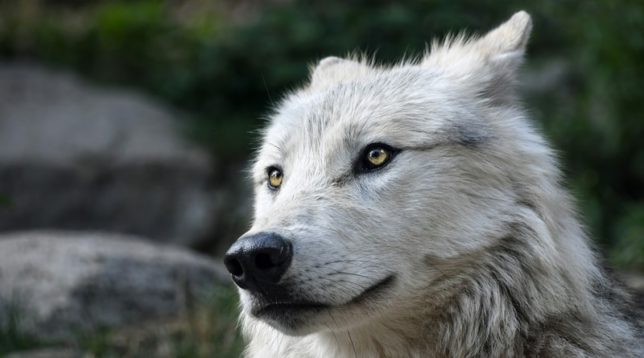
Science knows about 32 species and subspecies of wolves. The most interesting views will be described below.
Arctic (polar)
The rarest subspecies of the gray wolf. Distributed in Greenland, in northern Canada and Alaska. The absence of man in a cold, snowy area, allowed to maintain the habitat in its original form.
The Arctic Wolf is distinguished by its large and powerful body composition. The male at the withers can reach 1 m, with a weight of 100 kg. This species is characterized by sexual dysmorphism (males outnumber females in size by 15-16%).
The animal is ideally adapted to life in the conditions of the polar night, overcoming vast distances along the snowy plain to search for prey. An adult can eat up to 12 kg of meat at one time.Often, nothing remains of the prey, as the polar wolves do not chew the meat, but swallow it along with the bones.
Representatives of this species live in flocks, which number 12-15 individuals. The head of such a group can be not only male, but also female. There are times when a flock receives lone wolves (if they obey the leader).
Ruffed
The species was named because of the long fur that covers the neck and shoulders. The skin resembles a horse mane. The main place of residence is South America.
The maned wolf has a red color. A distinctive feature of the species are large ears and an elongated head. In appearance, the beast looks lean. The body weight of an adult does not exceed 25 kg.
A maned wolf is a lone hunter. As prey, he selects small livestock, birds, reptiles. It feeds on fruits.
Mackensen
The most common species living in North America. The weight of the animal can reach 80 kg and a height of 90 cm. The individual preys on deer, musk ox, moose and bison.
Mountain (red)
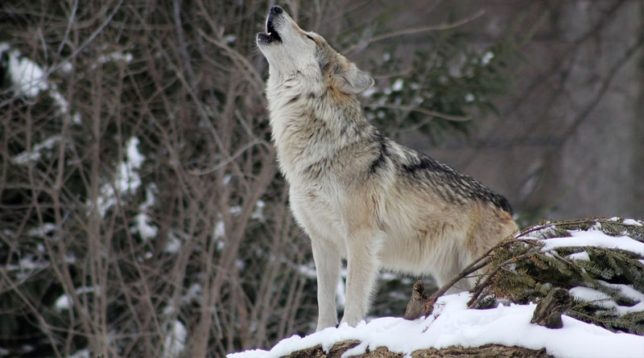
The mountain wolf has a beautiful appearance. Its fur color is reminiscent of fox fur. Weight slightly exceeds 20 kg. Length does not exceed 100 cm. Color depends on the region of residence. In the cold period, the fur becomes softer, more fluffy and thick. With the onset of heat, it takes on a dark color and begins to become coarse.
Predators of this species live and get food in a flock of 12-15 individuals. There is rarely a clear leader in their community. Deer, antelopes or large rodents are chosen as prey. A strong flock can attack a bull and even a leopard. In case of food shortages, the red wolf can eat carrion.
The animal lives secretly, trying to arrange parking away from people. This impedes learning.
Redhead
The appearance of a red wolf is similar to the appearance of gray individuals, only red ones are inferior in size and weight, and also have shorter ears and fur. The body can reach a length of 130 cm and a weight of 40 kg. The color is not monophonic, the muzzle and legs are red, and the back is dark.
Predators settle in swamps, steppes and mountains. In flocks there are individuals of different ages. In a group, there is almost never aggression towards individual members.
The red wolf eats not only meat, but also vegetation. Mostly hunts rabbits, rodents and raccoons. Very rare, but attacks large mammals. There are times when the predator itself becomes the prey of a lynx or alligator.
Common wolf
This species is generally called the gray wolf. It is the most common animal in the family. Body length reaches 160 cm, weight - 80 kg.
The animal lives in North America, and on the territory of Eurasia. In recent years, the total number has decreased significantly. The reason for this is extermination by man. And only in North America does the population remain stable.
What do wolves eat?
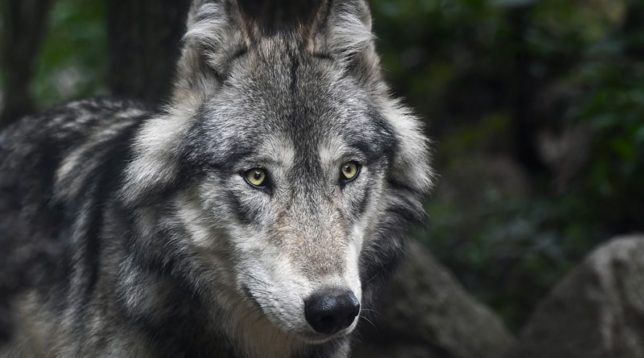
The wolf is a predator. Most often, he chooses the following animals as prey:
- Roe deer.
- Antelope.
- Boar.
- Deer.
- Hare.
- Moose.
Small species, as well as lonely individuals, attack smaller animals - rodents, ground squirrels, birds. It is very rare to choose a victim in the person of a large predator, although there are times when flocks attack wounded or sleeping bears, foxes.
In the hunger period, they can return to malnourished carcasses. At such times, predators do not disdain carrion.
In addition to meat, they eat forest fruits, berries, grass, watermelons, melons. Such food allows you to get the required amount of fluid.
Breeding and rearing offspring
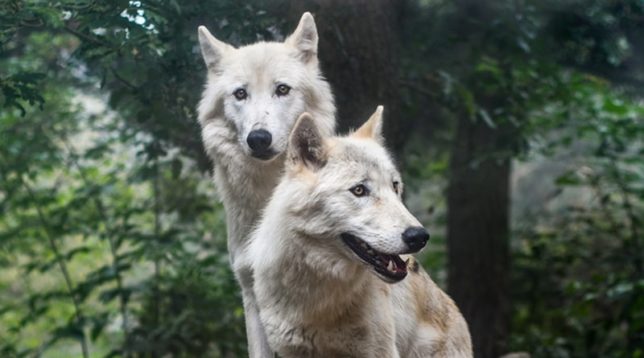
A pair of wolves, as a rule, is formed for life.If one of the partners dies, the second is not looking for a replacement. Animals live in packs of 12 to 45 individuals (depending on species).
In the wolf community there is a clearly built hierarchy. The head is an alpha animal (it can be either male or female). This is followed by adults, lone wolves, and puppies. Very often lonely individuals are accepted in a flock. The main condition is a tolerant attitude towards other members of the pack. When puppies reach the age of three, they are driven out of the conglomerate. It's time to find a mate for yourself, and start a family.
The most stressful time in the life of the pack is the mating season, when alpha males and females try to fight off other members. Often, fights between animals end in death.
For one litter, a she-wolf has from 3 to 15 puppies. Offspring have been hatched for more than two months. Puppies are born blind. Eyes open 10-14 days after birth.
Wolves in zoos - features of captivity
Wolves in zoos live longer than wild relatives (the first live 20 years, the second from 8 to 15). This is due to the fact that in the wild, old individuals, unable to obtain food, die or become victims of relatives.
For a full life in captivity, special conditions must be created. The fact is that the animal in its natural environment runs up to 20 km daily. This is a normal and necessary load, so there must be an aviary of the appropriate size. It’s good to recreate the conditions of the terrain in which the animal should live.
An adult should consume up to 2 kg of fresh meat daily. In winter, the norm increases to 3 kg.
Periodically, live food should be brought in to preserve the instinct of the hunter.
The story of the domestication of a wolf in a dog
Very often small wolf cubs fall into the hands of hunters. They do not always take animals to the zoo. Someone brings them home, someone sells. Such a product is in demand, there are risky people who want to get a predator. And the desire to raise a pet from a wild beast warms the excitement even more.
In most cases, such decisions are erroneous and unsafe. The wolf is primarily a predator. Turning it on at home is like installing a time bomb. Sooner or later it will explode.
If such a predator appears in the house, then first of all it is necessary to create all conditions ensuring safety. The wolf is an intelligent, freedom-loving and cunning animal, so he will spend all his free time trying to get out of the cage. In addition, he is able to learn primitive actions from a person. In other words, he can remember how a person opens a cell, and do it on his own.
Keep the wolf at home only in a special cage, or aviary. For its construction, it is better to attract a specialist. A hastily assembled cage from improvised materials can help free the beast and lead to tragedy.
Another point that everyone should know to tame a wild animal. He will never serve as a dog. The wolf is a predator, and man is an enemy for him, he will always be afraid of him. Consequently, when an alien tries to enter the territory of the house, he will try to hide.
Interesting Facts
- Numerous experiments of breeders allowed to breed mixed breeds of wolf and dog. Today, two mixed breeds - the Czechoslovakian Wolf and Sarlos - have gained recognition.
- In the Middle Ages personified the servant of the devil. Many stories, fairy tales, legends were composed, in which the image of a wild animal appeared.
- Many coats of arms belonging to the noble families of Europe, had the image of a wolf. Representatives of ancient surnames claimed that their genus originated from werewolves (a mixture of man and wolf).
- Before the battle, the Scandinavian Vikings wore wolf skins and drank the blood of predators. In their opinion, this ritual was supposed to bring good luck.
- In the 16th century, Ireland was called wolf land. The reason for this was the numerous flocks of predators that lived on these lands.
- In the calm, the animal can hear the sound at a distance of 17 km.
- Wolves are excellent swimmers. They are able to swim at a time a distance of 10 km.
- Hitler was an admirer of these animals. For this reason, many Wehrmacht headquarters had a name associated with predators.
- It was customary for the Aztecs to puncture a dying man in the chest with a wolf bone. In their opinion, with the help of the ritual one could be saved from death.
- In Japanese, the word wolf means "great god."
Watching the wolves for centuries, man realized that the predator is a disciplined and intelligent animal, and not just a hunter and killer. A way of survival in the wild, life in a couple, building a hierarchical ladder in a pack, allows us to talk about the uniqueness of this mammal.










